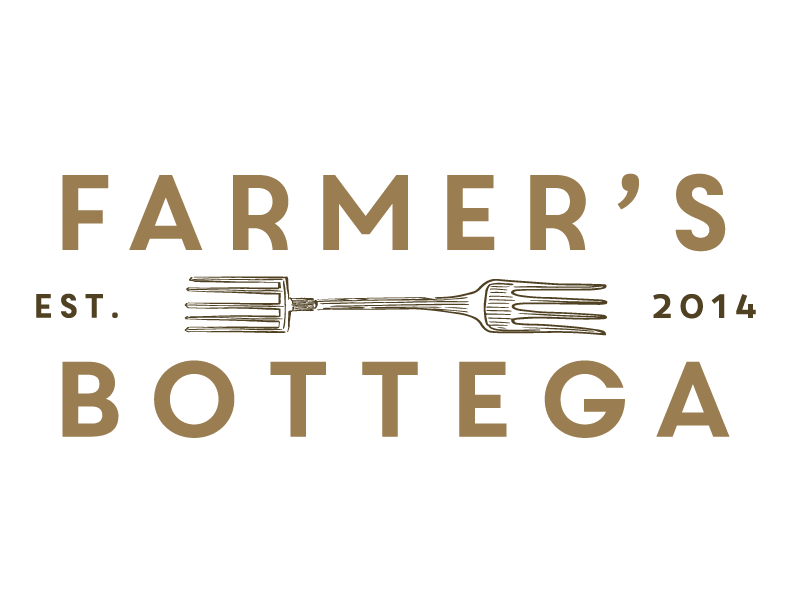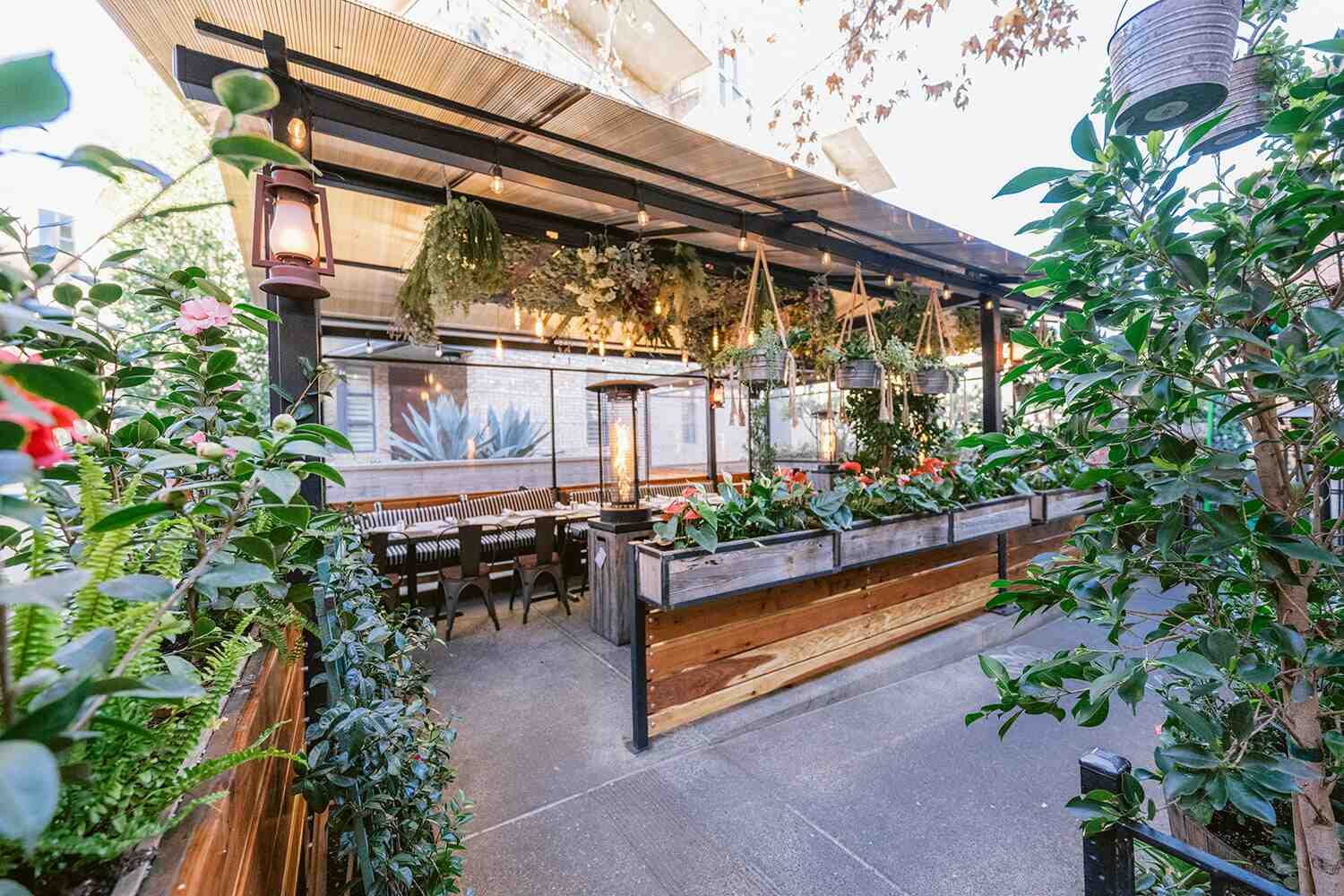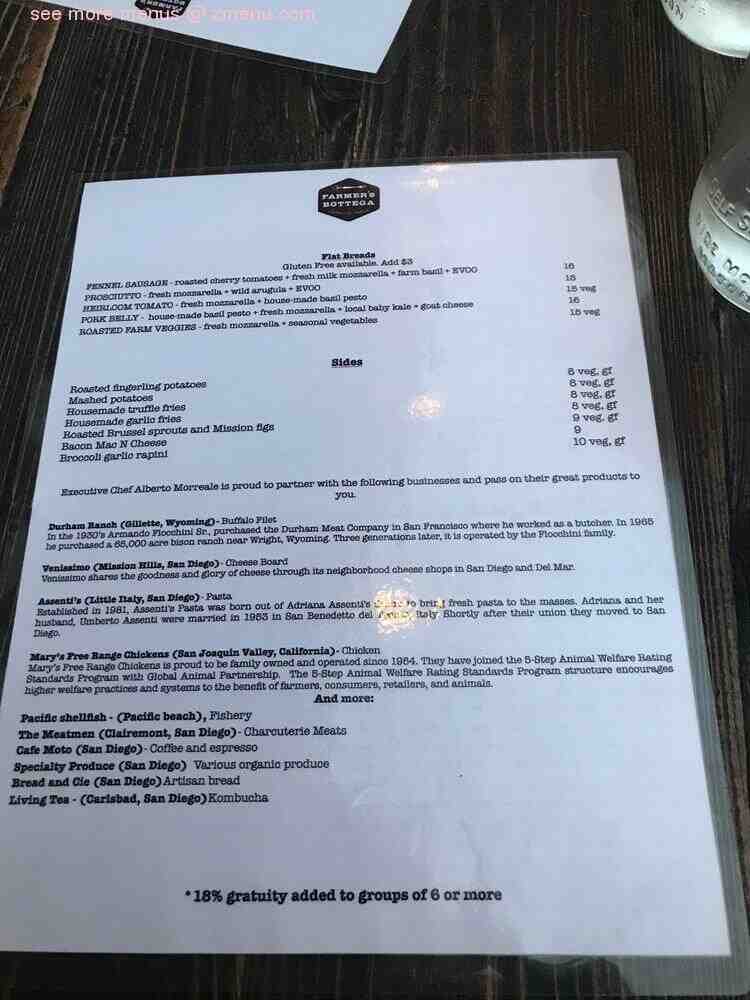Farmer’s Table is a restaurant concept from two San Diego chefs and restaurateurs – Alberto Morreale and Vincenzo Loverso. Alberto owns the Hillcrest and Liberty Station Fig Tree Café locations and is the owner of Farmer’s Bottega in Mission Hills.
Who owns Farmers Bottega San Diego?

Owner and Chef: Alberto Morreale In 1995, Morreale’s passion took him to the United States where he settled in San Diego. Starting as a sous chef at Osteria Panevino, Morreale went on to open four more restaurants with the restaurants’ parent company.
Who owns Farmer’s Table La Mesa? Its owners, cousins Alberto Morreale and Vincenzo Loverso, are both local restaurant veterans — Morreale runs the Fig Tree Café locations around town and Farmer’s Bottega in Mission Hills and Loverso owns several Gaslamp restaurants including Greystone The Steakhouse, Osetra The Fishhouse, and Inn…
What is farm to table concept?

A farm-to-table approach means serving “food on the table [that] came directly from a specific farm, without going through a store, market or distributor on the way.” and socially sustainable food system and supply chain, along with improving food security in the country…
What does the farm-to-table trend include? Farm to table is a movement that promotes locally grown and/or organic food. The idea is that our meals should be based on where we live and what we eat. By eating food grown at home, we are able to support the local community and prevent food miles from polluting our environment.
Why is farm to table so important?
Farm-to-table food is healthier than processed and packaged foods. First of all, it is all natural and many of the ingredients and products are grown or grown locally. Second, it probably contains less calories, fat, sugar and carbohydrates than the pre-packaged food you find in the store.
When did farm to table become popular?
Chez Panisse became very successful, and the farm-to-table movement began to grow steadily during the late decades of the 20th century. But, the movement didn’t explode in popularity until the 2000s, when farm-to-table places began to open in cities like Boulder, Colorado and Seattle, Washington.
How does farm to table help a community?
It is a form of agriculture and logistics that spans entire communities and their economies. By uniting local food producers, processors and marketers, this food-centric ideology strengthens markets by building brands and consumer faith in their neighbors’ businesses.
What are the 5 steps of farm to table?
The delivery of food from the farm to your table consists of the following five steps:
- Production of goods. …
- Processing of agricultural products. …
- Food transportation to a regional distribution center. …
- Shipping products to local stores. …
- The food ends up on your plate.
What is the process our food goes through from the farm to our plate?
The journey from farm to plate consists of five different stages: production, processing, distribution, retailer and consumer.
What does farm-to-table mean?
Feeding. Simply put, Farm-to-Table refers to food that comes directly from the farm and goes directly to the table to be consumed eliminating any middle man such as a market, grocery store, etc.
What does farm to table mean?
Feeding. Simply put, Farm-to-Table refers to food that comes directly from the farm and goes directly to the table to be consumed eliminating any middle man such as a market, grocery store, etc.
What is the farm to table movement?
The Farm to Table movement is a social movement that invites consumers to choose natural, often organic, locally produced foods over imported or processed alternatives. The movement supports the community, instead of global food systems.
How farm to table really works?
Farm to table, also known as farm to fork, can be defined as a social movement where restaurants source their ingredients from local farms, usually through direct purchase from a farmer. Most of the traditional restaurants take their products from other parts of the country or the world.
What are the disadvantages of farm-to-table?

Cons of Farm to Table:
- If you are thinking of opening a farm to fork restaurant, you will have to constantly change your menu. …
- In the past, some restaurants have taken advantage of the buzzword for their own gain, claiming to be farm-to-table without actually using local ingredients.
What are the advantages of farm to table? Farm-to-table food is healthier than processed and packaged foods. First of all, it is all natural and many of the ingredients and products are grown or grown locally. Second, it probably contains less calories, fat, sugar and carbohydrates than the pre-packaged food you find in the store.
What is the disadvantage living in farm?
A disadvantage of living on a farm is that it can be less convenient for daily family life. Now, it all depends on where your house is located. Some farms are out in the sticks, miles from the nearest town. Others are just a short drive from the main city center and vary across the country.
Is it safe to live next to farms?
Do farmers have more health threats than the general population? Obviously, farmers are exposed to much higher exposure levels, and contact with farm animals is a major risk factor for carrying antibiotic-resistant bacteria. Long-term exposure to pomegranate dust can also cause chronic respiratory conditions.
Is it hard living on a farm?
Although life in the country can be slow and relaxing, being a farmer can also be hectic, busy and challenging. You will have a lot of tasks to attend to every day. Farmers typically rise with the sun, and are hard at work all day and sometimes into the night.
What is another name for farm-to-table?
Farm to table can also refer more loosely to farmers markets, community supported agriculture (CSA), and other places where people can buy food directly from growers, with the table being that of your house.
What is farm to table movement?
The Farm to Table movement is a social movement that invites consumers to choose natural, often organic, locally produced foods over imported or processed alternatives. The movement supports the community, instead of global food systems.
Who coined the term farm to table?
If you want to know how the “farm to the table” movement is progressing, ask any of the 800 postmasters here this week. If you want a particularly enthusiastic answer, ask Mr. Colin M. Selph, author of the idea, and inventor of the phrase.
Is farm-to-table sustainable?
Environmental Benefits When you dine out at a farm-to-table restaurant, you’re also helping the environment. Because local food is transported only short distances, less fuel is consumed and fewer emissions are released in the process of getting the ingredients to the restaurant.
Is farm-to-table healthier?
Ditch Processed Foods. Farm-to-table food is healthier than processed and packaged foods. First of all, it is all natural and many of the ingredients and products are grown or grown locally. Second, it probably contains less calories, fat, sugar and carbohydrates than the pre-packaged food you find in the store.
Is farm to fork sustainable?
The Farm to Fork Strategy is in line with the Sustainable Development Goals and also aims to raise standards in the world, through international cooperation and trade policies so that its ecological transition is not compensated by the externalization of unsustainable practices in other regions.
What is another name for farm-to-table?

Farm to table can also refer more loosely to farmers markets, community supported agriculture (CSA), and other places where people can buy food directly from growers, with the table being that of your house.
What is the farm-to-table movement? The Farm to Table movement is a social movement that invites consumers to choose natural, often organic, locally produced foods over imported or processed alternatives. The movement supports the community, instead of global food systems.
What does farm to table mean?
Feeding. Simply put, Farm-to-Table refers to food that comes directly from the farm and goes directly to the table to be consumed eliminating any middle man such as a market, grocery store, etc.
What is a farm to table concept?
Essentially farm to table means harnessing the produce and livestock of local farmers and ranchers; simply put, buy local. “Most produce loses its nutrients within 24 hours of harvesting.”
How farm to table really works?
Farm to table, also known as farm to fork, can be defined as a social movement where restaurants source their ingredients from local farms, usually through direct purchase from a farmer. Most of the traditional restaurants take their products from other parts of the country or the world.
Who coined the term farm to table?
If you want to know how the “farm to the table” movement is progressing, ask any of the 800 postmasters here this week. If you want a particularly enthusiastic answer, ask Mr. Colin M. Selph, author of the idea, and inventor of the phrase.
When did farm-to-table become popular?
Chez Panisse became very successful, and the farm-to-table movement began to grow steadily during the late decades of the 20th century. But, the movement didn’t explode in popularity until the 2000s, when farm-to-table places began to open in cities like Boulder, Colorado and Seattle, Washington.
Who was involved in the farm-to-table movement?
In 1971, Alice Waters, a recent Berkeley graduate, opened the doors to a restaurant called Chez Panisse. Located in Berkeley, California, a center of counterculture thought, it has become the incubator for the farm-to-table movement. The water was fixed on the concept of forming only local vegetables and buying from local farmers.
Sources :
